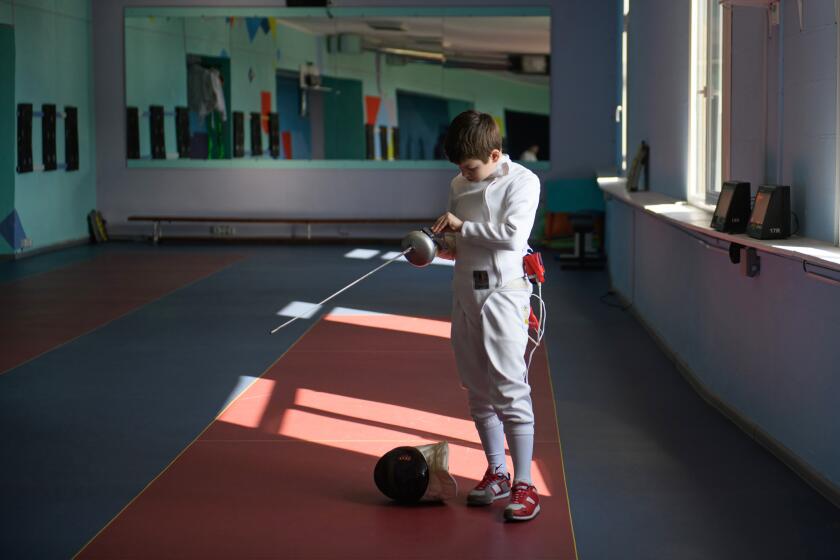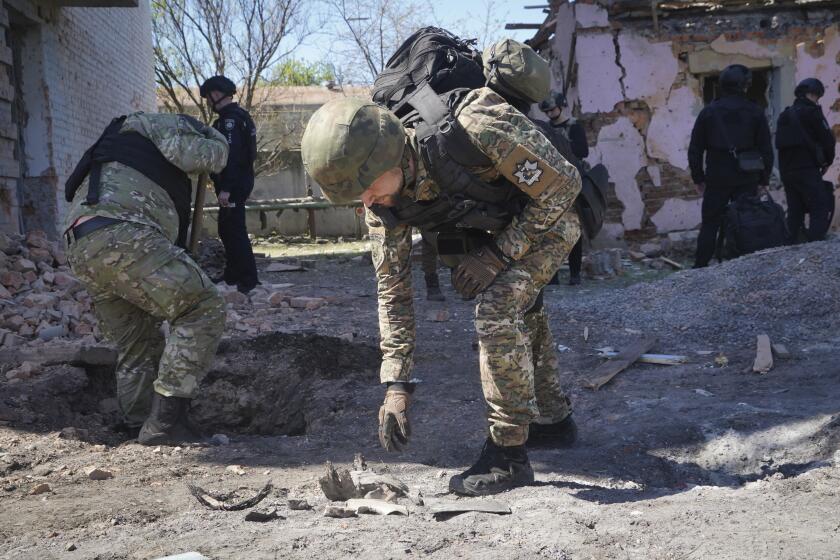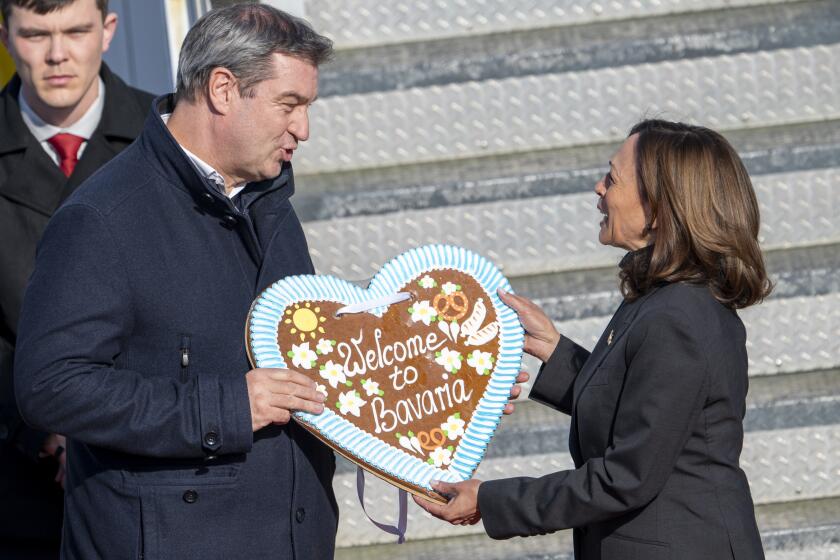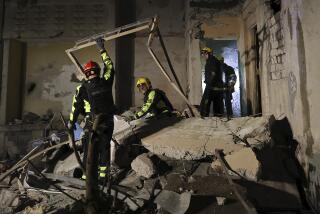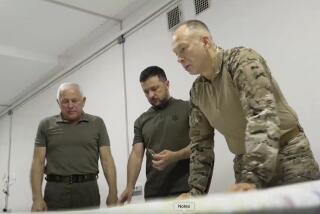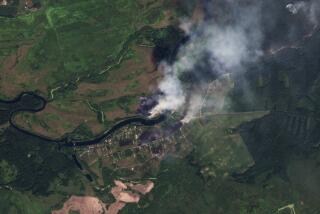Ukraine says it used U.S. glide bombs in Russia’s Kursk region and has retaken land in Kharkiv
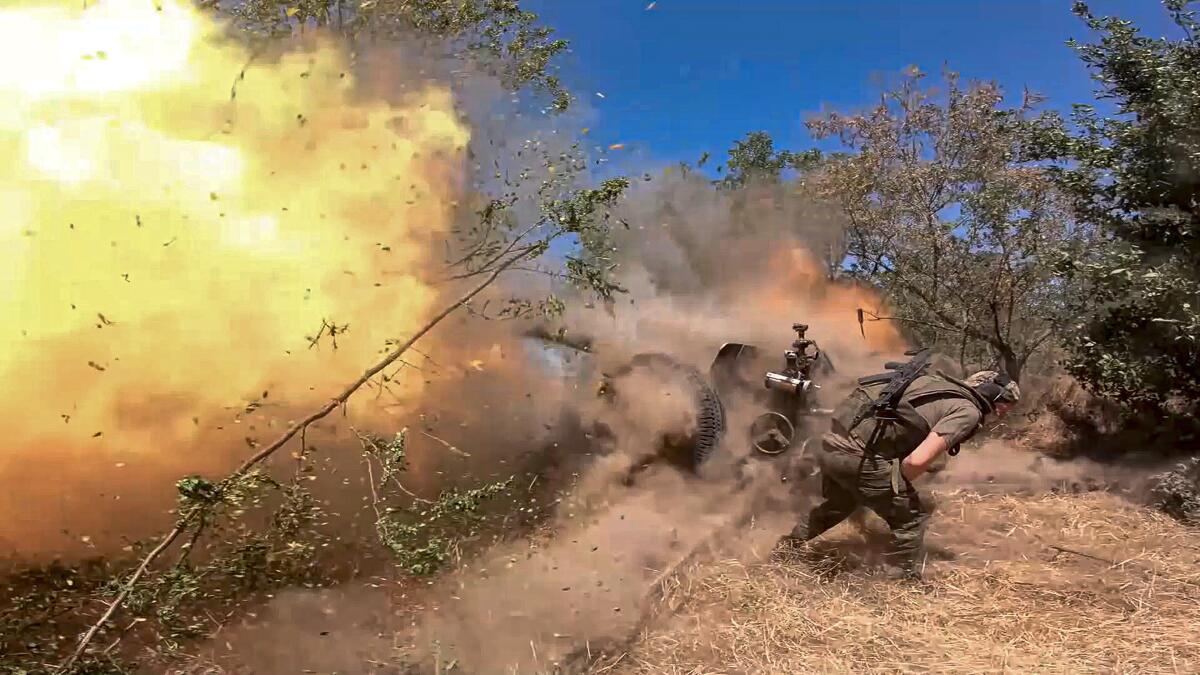
KYIV, Ukraine — Ukraine’s military says it used high-precision glide bombs provided by the United States to carry out strikes in Russia’s Kursk region while also saying it recaptured some territory in the eastern Ukrainian region of Kharkiv, where Russia launched an offensive in the spring.
Ukrainian air force Cmdr. Lt. Gen. Mykola Oleschuk issued a video Thursday night purporting to show a Russian platoon base being hit in the Kursk region. He said the attack with GBU-39 bombs resulted in Russian casualties and the destruction of equipment.
The video showed explosions and plumes of smoke rising at the site.
Many of Ukraine’s backers oppose the country using donated weapons for anything but defensive purposes. However, Ukraine has argued that its Kursk incursion is essentially defensive and aimed at minimizing attacks on Ukrainian soil from that Russian region.
U.S. officials have said that Washington supports Ukraine’s use of shorter-range weapons such as glide bombs in its attacks across the border.
President Biden said in a statement ahead of Ukraine’s Independence Day that he spoke to Ukrainian President Volodymyr Zelensky on Friday to “express America’s unwavering support for the people of Ukraine.” Biden also announced a new package of military aid for Ukraine, including air defense missiles, counter-drone equipment, anti-armor missiles and mobile rocket systems.
White House national security spokesman John F. Kirby said Friday that U.S. officials have been in near-daily contact with Ukrainian counterparts and have made no recent changes to guidance on how U.S. weapons can be used in the Kursk offensive.
“They are allowed to use U.S.-provided material to defend themselves against Russian aggression. And, as you know, the president allowed them to use U.S. munitions across that border to deal with imminent threats,” Kirby told reporters in Washington.
Kirby added that it’s unclear how successful Ukraine’s operation in Kursk will be over the long term. Russian officials on Friday reported some success in turning back Ukrainian forces in some areas of the Kursk region.
Separately, Ukraine’s 3rd Separate Assault Brigade said its forces advanced about three-quarters of a square mile in the Kharkiv region. Details were not divulged about the timing, scale and area of the offensive, and it’s hard to predict what impact it could have on the battlefield.
Ukraine’s forces have gained new momentum this month after delayed deliveries of U.S. weaponry were finally released. Kyiv launched a shock offensive into Russia’s western Kursk region on Aug. 6, while simultaneously intensifying a drone war against military and fuel targets that sparked blazes deep in Russia this week.
On Friday some new details emerged about damage and injuries caused by some of those attacks.
Kharkiv, Ukraine’s second-largest city, is facing intense Russian airstrikes, but its residents are defiant. “We can stand up, no matter what they do,” one said.
A Ukrainian drone attack in Russia’s Volgograd region caused significant damage to an airfield that reportedly housed glide bombs used by Moscow in the war, satellite photos analyzed Friday by the Associated Press showed.
An attack on a cargo ferry at the port of Kavkaz in Russia’s Krasnodar region on Thursday injured 13 people, Russia’s state news agency Tass reported Friday.
Ukraine is trying to determine if Russia’s ground attack in Kharkiv is opening a new war front — or meant to divert overstretched Ukrainian troops?
Ukraine’s gains have reshaped the battlefield and buoyed the morale of Ukrainians 10 years after Russia first invaded their country and 2½ years after Moscow launched a full-scale invasion that has led to mass death and destruction and created Europe’s largest refugee crisis since World War II.
Ukraine and its Western allies hope that the regained momentum could strengthen Kyiv’s hand on the diplomatic front. Indian Prime Minister Narendra Modi met Friday with Zelensky in Kyiv. Some Ukrainians hope Modi, who has maintained cordial ties and economic relations with Russian President Vladimir Putin, could play a role in forging a mediated peace.
The incursion into Russia has highlighted Russian vulnerabilities but also further stretched Ukrainian forces, who were already fighting on a front line running hundreds of miles. It has possibly compromised Ukraine’s ability to hold back Russian forces who have slowly but steadily gained ground in the Donetsk region.
In Europe, there’s relief over a strong standard-bearer facing Trump. A Kamala Harris win would represent continuity, with some potential curveballs.
It’s not clear how long Ukraine will be able to hold the land it has seized in Russia.
The Russian Defense Ministry on Friday said its troops turned back Ukrainian attempts to advance on the Kursk region’s villages of Borki and Malaya Loknya. The ministry also reported taking out a reconnaissance and sabotage group near Kamyshevka, 12 miles north of Sudzha, which the Ukrainians took.
Ukraine’s 3rd Separate Assault Brigade said in a statement late Thursday that Ukrainian soldiers took control of an area that was held by a Russian battalion, and some strongholds.
Brigade Cmdr. Andrii Biletskyi said it attacked Russian troops that had superiority “and won,” adding that the ratio of forces on the battlefield was 2.5 to 1 in Moscow’s favor.
The Associated Press was unable to independently verify the claims, and there was no immediate comment from Russia.
Russia launched an offensive in the Kharkiv region in May that led to some gains but soon stalled. Fighting in that area has diminished as the Russian army has concentrated its efforts in Donetsk, part of the industrial Donbas region that Moscow formally annexed but does not fully control.
Russia’s springtime advance on Kharkiv was seen as a sign that Ukraine’s position was weakening amid the delays of Western military aid.
Associated Press writers Arhirova reported from Kyiv and Gera rom Warsaw. AP writer Jon Gambrell in Dubai contributed to this report.
More to Read
Sign up for Essential California
The most important California stories and recommendations in your inbox every morning.
You may occasionally receive promotional content from the Los Angeles Times.
